
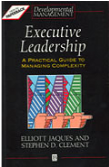
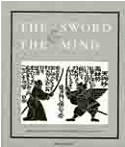


Takuan Soho: The Unfettered Mind,
translated by William S. Wilson, Kodansha International, 1987, ISBN 0-87011-851-X.
(102 pages, 110*182 mm)
The Unfettered Mind is a small book, 101 pages, with a great content. It contains classical Japaneese texts: 1/ the mysterious record of immovable visdom, 2/ the clear sound of jewels, and 3/ annals of the sword of taia.
Takuan Soho (1573-1645) was the leading intellectual of his time, a Buddhist abbot, oppositional in politics, and for a time expelled from mainland Japan, but saved by his friend Munenori Yagyu who was the shogun´s advisor and fence master (see The Sword & The Mind!).
Why read this nearly 400-year-old text? Because it is about eternal problems. It covers the necessary mental attitude for achieving victory in fast pace situations. The mental base of strategy, one could say. It also is entertaining. Everyone that has ever made his living as a consultant will recognize himself in the following quote from the book.
Long ago it was said that a wise retainer does not serve two lords. This meant that it was thought that a retainer would never have two masters. The world being in decline, retainers now employ themselves under this lord and that, in the end fitting the image of vagabond attendants while proclaiming their own merits. Such are the times in which we live.
A lord, saying that he is not pleased with one man or another, will drive the man from the household and heap shame upon him. This also puts the Way of Lord and Retainer, Master and Servant, in disorder.
Even if a retainer does serve in a number of clans, he should think of his master as being the one and only. This means that the lord will be an unknown lord, for, if he is unknown, the Way of the Lord will be established. Even if he serves in clan after clan, he should think of that lord as the lord, and this lord as the lord. In this way he will think of the lord with great devotion and, even though the clan may change, his mind will not. Thus, the lord will be the one and only from beginning to end.
If a man thinks, My lord is Matsui Dewa, but he is really a lout. . . . while he is receiving a stipend or fief and coming up in the world, his mind will not be thinking the lord at all. When he next employs himself under Lord Yamamoto Tajima, the same mind will follow along with him. Thus, no matter where he goes, he will never understand the meaning of the word lord and is not likely to prosper.
Therefore it is better not to inquire who this lord or that might be, but to simply think the lord and to consider rightmindedness towards him without mentioning his name.
Munenori Yagyu:
The sword & the Mind,
trans Hiroaki Sato, Overlook Press, 2000, ISBN 0-87951-256-3.
(133 pages, 175*208 mm)
Have you seen The Seven Samurai by Akiro Kurosawa? In the opening scene a samurai cuts of his hair knot and puts on the robe of a Buddhist monk. Then he enters a house where a thief has blocked himself and taken a small child hostage. The samurai in monk robe carries a rice cake in each hand. He now says: "you must be hungry" and throws one cake towards the thief. The thief drops the child and catches the cake. The second cake is thrown and the thief drops the sword. The samurai charge at the thief and kills him, he picks up the child and comes out of the house. The Buddhist monk is so impressed that he lets the samurai keep the robe.
The story is true and the name of the samurai was Kamiizumi Hidetsuna (1508-1577). He was a former daimyo, now wandering swordsman. Hidetsuna met with Yagyu Muneyoshi (1529-1606) and taught him Shinkage-ryu kenjutsu. Muneyoshi toke part in several wars and according to his son Yagyu Munenori (1571-1646) he spent all his time studying swordsmanship.
Munenori, the son, was a talented man who gradually rose in the ranks to end as advisor and sword teacher to the shogun. Munenori was a friend of Takuan, great abbot, poet, calligrapher and scholar. Munenori very likely also knew Miyamoto Musashi, the greatest sword fighter of all time and an accomplished artist.
Munenori, by Takuan called the greatest martial artist of all time, taught Yagyu Shinkage-ryu kenjutsu and this book contains the deeper thoughts within this sword school.
Why read the book?
You must read The Sword & The Mind if you are just a tiny bit interested in strategy and leadership or Japanese martial arts or culture and history, or if you want to partake of thoughts from the early 16-hundreds that are clearly visible to us today because they are projected upon a 400-year-old pane.
Sun Tzu: The Art of War,
translated by Samuel B. Griffith, Oxford Paperbacks, 1971, ISBN 0-19-501476-6. (197 pages, 135*202 mm)
How do you organize large groups of people (up to 100 000 men) so that they will work together harmoniously under severe conditions with great uncertainty and danger in order to achieve a common goal? The principles for this is what the classic Art of War, by Sun Tzu is all about.
It is a remarkable book, so modern and yet 2400 years old. Sun Tzu´s views (maneuver thinking) and methods are completely aligned with the latest scientific results.
The important thing is not the martial content, but the principles for leadership and management and organization that Sun Tzu describes. Here is so much for the modern business developer or project manager. Sometimes you smile with recognition. What do you say that have been a project leader to the following two quotes? 1/ No evil is greater than commands of the sovereign from the court. 2/ There are occasions when the commands of the sovereign need not be obeyed.
Who reads Sun Tzu? Everybody does: Mao did, samurais did, all the great strategists of the Chinese cultural sphere read Sun Tzu, as do officers in higher military education in the western world today.
Among strategists Sun Tzu is more popular than ever, for instance for to understand the struggle against terrorist networks and so called 4th Generation Warfare.
Samuel B. Griffith, translator of the Sun Tzu text and author of commentaries and background material was a US Marines brigade general in WW2 and Korea. The book is an offspring of Griffith´s doctorial thesis put forth in Oxford in 1960. Is there a better way to read the strategist Sun Tzu than in a translation by the scholar, Sinologist and general Griffith?
Gary Klein: Sources of Power: How People Make decisions,
Second MIT paperback edition, 1999, ISBN 0-262-61146-5. (330 pages, 150*228 mm)
Gary Klein is the leading scientist in the field of Naturalistic Decision Making, how humans really solve problems and make decisions.
In contrast to others, Klein and his colleges have studied real people in real environments. It has been shown that laboratory results are misleading and well-established conclusions are false. Previous theory said that erroneous decisions were the result of logical errors, but this is not the case. Errors are due to an erroneous mental representation of reality and unfit mental models. Shit in, shit out, as they say in computer circles.
Sources of Power was as strong a feeling of - Yes, at last something that harmonizes with my own experience, as Dynamic Product Development by professor Stig Ottosson.
If you teach project management or are a manager in product development, officer, or just interested - buy and read!
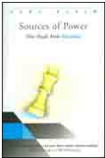
Elliott Jaques: Executive Leadership,
Paperback, Blackwell, USA, 1994, ISBN 0-631-19313-8, (316 pages, 151*229 mm)
How should a hierarchical organization (common line-organization) be manned and designed in order to function? What characteristics are important when choosing persons for the different hierarchical positions? What mental capacity of the leadership is the completely dominant factor for creating growth and profit in a company?
These questions are answered by Elliot Jaques in Executive Leadership. The scientist Elliot Jaques has been doing research for 50 years and has produced a large number of articles and books.
This is the most valuable book on organization, organizations, and leadership (which does not exist according to Jaques) that I have ever read.
If you are the very least interested in management, requiting personnel, organize, or manage projects, then you should read this book!
Miyamoto Musashi:
A Book of Five Rings,
trans Victor Harris, Overlook Press, 2001, ISBN 0-517-41528-3,
(96 pages, 180*217 mm)
Go Rin no Sho, Book of Five Rings, by Miyamoto Musashi (ca1585-1645) is according to himself a handbook for the study of strategy.
On the surface it is about Musashi´s Niten Ichi-ryu, two swords as one school. Musashi covers prerequisites, mental attitude, techniques, and the deeper meaning of swordsmanship, which is all about cutting down your adversary.
Musashi´s book is such that you recognize things you have experienced and in a way already know, but have not yet made into explicit knowledge. The novice therefore will find less use of this book than will the expert.
Strategy lessons from the books of Munenori and Musashi have helped me in product development and business negotiations.
If you are into budo, you must read Gorin no Sho.
Hugh Brody:
The Other Side of Eden,
faber and faber, 2002, ISBN 0-571-20502-X. (374 pages, 125*198 mm)
Whether we are atheists, agnostics, or believers of the Christian faith we in the western world live in a Judean-old Greece-Christian culture. It is a culture of farmers. The cultivated earth, the cattle, possessions and to have many children - that is valuable. Nature, the non-cultivated, lacks value and must be divided from the cultured area. Eden was a garden. God is a gardener, someone that cultivates the land.
In sharp contrast to this we find the hunter/gatherer for whom the wild nature is a food store, an inexhaustible resource towards which he is thankful.
Hugh Brody has written this fascinating and compelling book about Inuits and Indians in North America after having lived with them as an anthropologist for many years.
In order to understand ourselves and the economic ecology in which we act, it is efficient to take part of the culture of the hunter/gatherers. Then it is a matter of course that the hunter/gatherer´s conditions do not differ much from that of self employed professionals.
Read this captivating story of hunter/gatherers - and at the same time ourselves.


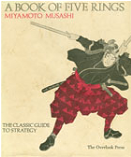
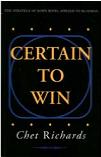
Chet Richards:
Certain to Win,
Xlibris 2004, ISBN 1-4134-5376-7. (187 pages, 139*216 mm)
This is a book on strategy. The strategy theory of US Air Force Colonel John R Boyd, that he arrived at after the study of 2500 years of human conflict, in this book as applied to business, authored by Chester Richards, doctor of mathematics and apprentice of Boyd.
A conflict in the context of strategy is a struggle or competition over limited recourses where one's gain is the other's loss. In a conflict both parties cannot win completely, because otherwise there would be no conflict.
And also it can be added: it is a fight with an adversary that is intelligent and does not wish us well.
This is true of war, which is the natural application of Boyd´s theory, but since Boyd found basic patterns common to all conflicts, the theory can be applied to other areas and it is this that Chester Richards does in his book.
The theory has its roots in foremost Sun Tzu (ca 400-500 BC), Miyamoto Musashi (ca1585-1645), maneuver warfare as developed by the German army from WW1 up to 1940 (which was so successful in the attack upon and invasion of France in 1940), and the study of hundreds of historical battles.
The best-known civilian applications are the automobile production and product development of Toyota and the product development philosophy / method known as DPD, Dynamic Product Development.
The first part of the book covers maneuver thinking at a basic level. Everyone that has passed through the Swedish Army platoon commander school or higher will find the stuff familiar even though everything is not covered by the author. The book's forte besides that it explains Boyd's theory, is the application to companies and business and all the good advise and suggestions offered by the author. Here the book is unique and I recommend it warmly!
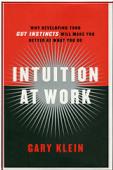
Gary Klein:
Intuition at Work, why developing your gut instincts will make you better at what you do,
1st ed, Doubleday, 2003, ISBN 0-385-50288-5. (212 pages, 160*240 mm)
Yet another great book by Dr. Gary Klein. This time Dr Klein tells us how to develop our intuition (as he defines intuition) through a number of exercises.
Intuition is the sum total of your experience. What you have to do is to learn how to feed your intuition by creating experiences from what happens to you, and to learn to recognize your intuition when it talks to you.
Not so densely written as "Sources of Power", a bit watered out text, but still a good, valuable read. Buy the book, read it, and do the exercises!

Edward N. Luttwak: Strategy, The Logic of War and Peace,
Revised and Enlarged Edition, The Belknap Press of Harvard University Press, 2001,
ISBN 0-674-00703-4, (308 pages, 155*235 mm)
Edward Luttwak gives an excellent overview of military/political strategy. Unless you are an expert in the field (and then you'd probably already read the book) you will find lots of interesting information. And probably also gain a new perspective on 20th century history.
Luttwak stresses the complexity and interconnectedness between the five levels of strategy, namely: technical, tactical, operational, theater of war strategy, and grand strategy.
I first read Coup d'Etat; a practical handbook by Luttwak in 1969. in that book Luttwak describes a coup d'Etat taking Portugal as an example. I was amazed to find in 1974 that the successful and unbloody coup performed that year by the Portuguese military followed the prescription from Luttwak's 1968 book.
Yoy will not regret reading Strategy: The Logic of War and Peace!
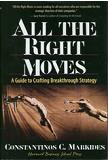
Constantinos C. Markides:
All the Right Moves,
Havard Business School Press, 2000, ISBN 0-87584-833-8, (220 pages, 160*240 mm)
Constantinos C Markides is a Professor and Chairman of the Strategic and International Management Department at the Business School of London.
With this book proof. Markides has given us an easy to read text on business strategy based in the traditional: Identify customers - decide on tactics - accumulate resources and create capabilities - create organization - etc.
There is a slight tendency towards strategy through planning than through learning. Never the less, there are many useful methods and thought provoking observations given, that make this book a valuable read to upper management.

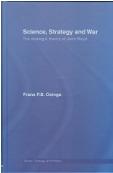
Frans Osinga:
Science Strategy and War; the strategic theory of John Boyd,
Routledge, 2007, ISBN 0-415-37103-1, (313 pages, 160*240 mm)
This is the Dutch air force colonel Frans P.B. Osinga's doctoral thesis, in a somewhat rewritten form. This book is the best, or perhaps the most serious, description of the strategic thinking of John Boyd.
The strategic theory of John Boyd's is much more than the well known and often misunderstood O-O-D-A loop.
In strategy, higher levels control, or rather dominate, the lower levels. One can win battles, but lose the war. Boyd stressed the importance of winning at the highest level, of grand strategy; do not get yourself unnecessary enemies, don't drive the neutrals into the arms of your enemy. Further, he stresses the importance of people, ideas, and equipment, in that order.
This book is necessary reading for anyone that is interested in maneuver thinking, learning strategies, or modern strategic thinking.

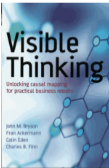
Adrian Furnham:
The Elephant in the Boardroom:the causes of leadership derailment,
palgrave macmillan, 2010, ISBN 978-0-230-22953-2, (283 pages, 240 x 165 x 20 mm)
This book is about leaders, personality traits and disorders. The three big: psychopaths, narcissists, and Machiavellians are discussed. And also schizoid, borderline, avoidant, dependent, self-defeating, and sadistic. Their prevalence is somewhere around 0.5-2% for each of the traits/disorders, which means that you probably have one or more at your workplace.
Furnham sketches the historical development and where science stands today. The discussion of leadership and its demands on leaders is very good. I like this book a lot.
Purchase and read! Recommended.
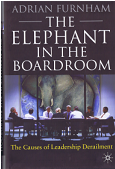
Sun Tzu:
Art of War - Spirituality For Conflict: Annotated and Explained,
SkyLight Paths, 2008, ISBN-13: 978-1594732447, (256 pages, 216*139 mm)
Sunzi in a new translation with commentaries that have been collected from visitors to www.sonshi.com and this is both a strength and weakness. The modern commentaries, in my view, tend to be too local in time and culture.
It is competent, but I miss the historical commentaries that were there in the translation by Griffith. Anyway, worth bying.
Sun-tzu (John Minford, trans & ed): The Art of War,
Penguin Books, 2009, ISBN 978-0-14-310575-6 (325 pp, 195 x 126 x 17 mm)
This is my personal favorite translation of the classic 13 chapters of Sunzi. Very good!
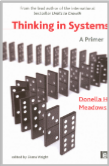
Donella H. Meadows:
Thinking in systems: a primer,
Earthscan 2009, ISBN 978-84407-726-7 (218 pages, 155*233 mm)
Donella Meadows gives a basic theory for modeling a system.
The author emphasizes the importance of not getting stuck on focusing our attention on individual events but watch for flows, or better still, focus attention on those accumulations which drives flows. It can be capital, mineral resources, knowledge, etc.
Furthermore, attention should be paid to feedback loops. They can be self-reinforcing and cause exponential growth as is the case with Earth's population, or our collective knowledge. Or they may be balanced and keep a retention (stock, with Meadows parlance) at a certain size.
The book contains a lot of pointers and some minor factual errors. But if live with that, the book is very readable and clearly thought-provoking.
After reading and pondering Meadows message you may find yourself concentrate your actions on finding leverage points, which is the appropriate points to intervene in the system, as well as on feedback loops.
You will also get a better understanding of the importance of considering the history of the system as a source of system knowledge.
The book is recommended as a first introduction to systems thinking.
Carl von Clausewitz:
On War (Vom Kriege),
Wordsworth Classics, 1997, ISBN978-1-85326-482-5, (373 pages, 127*197 mm)
The Prussian officer Carl von Clausewitz book was published posthumously for the first time in 1839.
Clausewitz, who was interested in the great progress made during his time in the natural sciences, aimed at creating a scientific theory of war.
Everyone can quote from Clausewit, but no one has read his book. On War comes in several translations, and either the translator was good at German, but knew nothing of the subject, or vice versa. Therefore most translations are heavy, convoluted and difficult to access. So also this. But the one who endures shall be rewarded. Clausewitz approach, for more than that was not achieved before he died, is interesting.
Clausewitz introduces two new concepts; the fog of war and friction. The fog of war alludes on that every commander is always suffering from lack of information and that some of what is believed to be information is in fact noise, or the result of enemy deception. The friction alludes to the fact that everything that in peace or on paper seems easy, becomes difficult and risky at war. Clausewitz even goes so far as to say that friction is the only thing that separates war in the real domain from war on paper.
What is interesting is the different conclusions that the world's strategists and military commanders learned from Clausewitz findings. Furthermore, it is interesting to read Clausewitz historical soul, as a European Sunzi. Vom Kriege should be in every strategist's library .
John Bryson, Fran Ackermann, Colin Eden, Charles Finn:
Visible Thinking, Unlocking causal mapping for practical business results,
Wiley, 2004, ISBN 0-470-86915-1, (373 pages, 228*152 mm)
This book is about a method for creating strategy, usually in groups. The method, called visible thinking, is mainly about writing on the wall (on small sticky notes) what one wants to do. Then you write above the previous text what the results will be if you do what you want to do (with arrows in between). Below the first text you write (again with arrows) what it takes (prerequisites) to be able to do what you want.
After some processing you may see that a certain result that you really want to achieve can be reached easier/better in other ways. This is an effective and rather slick method.
Ackermann and Colin Eden are professors at the University of Strathclyde in Glasgow. John Bryson is a professor at the University of Minnesota, and Charles Finn is a professor at the College of Saint Rose in New York.
Mainly Ackermann and Colin Eden have an extensive consulting experience with this method. The book is easy to read and the layout is good. By searching the Internet one can find software that supports the method. Recommended!
Malcom Gladwell:
Blink; The Power of Thinking without Thinking,
Penguin Books, 2005, ISBN 978-0-14-101459-3, (277 pages, 197*127 mm)
Malcolm Gladwell has written a highly entertaining book about why first impressions are often correct , why you in less than three minutes can decide whether a marriage will work or that we all carry prejudices that without us being aware of them affects our environment which then affect us.
" ... Information on our face is not just a signal of what is going on inside our mind . In a certain sense , it is what is going on inside our mind" .
Through a number of amusing anecdotes Gladwell imparts to us scientific findings that give us new knowledge about ourselves. An interesting and entertaining book.
Gerd Gigerenzer:
Gut Feelings, Short Cuts to Better Decision Making,
Peguin Books, 2007, ISBN 978-0-141-01591-0, (280 pages, 197*128 mm)
If you liked Malcolm Gladwell's ' Blink ' , then you will appreciate this book even more.
Gerd Gigerenzer is director of the Center for Adaptive Behavior and Cognition at the Max Planck Institute. In the book, he provides scientific explanations for various phenomena , such as why a group of relatively ignorant can have more rights than an expert in a quiz, how decision support systems should be designed, why intuition works and much more.
The book is highly recommended.
Steve Strid and Claes Andreasson,
The Viking Manifesto, the Scandinavian approach to business and blasphemy,
Marshall Cavendish, 2007, ISBN 0-462-09905-9, (168 pages, 135*205 mm)
A small, funny, profound book on marketing and company culture.
Read and enjoy yourself while you get something to think about!

Connors, S. (editor) & Song, C. (transl):
Military Strategy Classics of Ancient China,
Special Edition Books, ISBN 9781937021030, (411 pages, 152*230 mm)
This book contains eight classic texts from about 1000 BCE to 650 CE. They are: 1/ the six secret teachings, 2/ the art of war, 3/ the methods of war, 4/ the book of Wuzi, 5/ the book of Wei Liaozi, 6/ the three strategies of Huang Shigong, 7/ the thirty six strategies, 8/ Questions and replies: Tang Taizong and Li Jing.
What really impresses is the wisdom, clear understanding of political realities and unsentimental benevolence. Repeatedly you think, what if our present day politicians read and understood. How much better our situation would be.
Classic Chinese texts are often compressed, like poems. Therefore, it is not possible to give a satisfying presentation of this book's content in just a few lines. You must read it yourself. Highly recommended.

Gert Gigerenzer: Simply Rational: Decision making in the real world,
Oxford University Press, 2015, ISBN 978-0-19-939007-6, (312 pages, 160*243 mm)
This book is a compilation of papers by Professor Gert Gigerenzer, director at the Max Planck Institute. The subject is bounded rationality, ecological rationality, heuristics, and the difficulty of theory in psychology, among other things.
Ecological rationality studies under what conditions, in what ecology, a set of rules (heuristics) are effective and efficient. It has been found that simple rules of thumb in most environments outperform analytical deliberations.
This is important for, in combination with the Cynefin model (environment description /classification) this research supports the use of rules of thumb in LPD and DPD.
Highly recommended. Read this book!
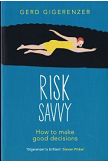
Gert Gigerenzer:
Risk Savy: How to make good decisions,
Allen Lane, 2014, ISBN 978-1-846-14474-5, (322 pages, 153*233*25 mm)
About risk, uncertainty, bayesian thinking, why simple rules of thumb outperform analytical analasis, and much more. An important book. This is a must read.
Robert Cialdini:
Influence:The psychology of persuation,
Harper, 2007, ISBN 978-0-06-124189-5, (320 pages, 135*203*21 mm)
Dr. Robert Cialdini is a professor of psychology and a professor of marketing and is thus, through his research, exceptionally well situated to talk about how we are influenced. The author takes us through the six basic ways that this happen.
I find the "social proofing" method to be the most profound, since it appears to be hardwired in so many different species. First printed in 1984, but still a very good read.


























